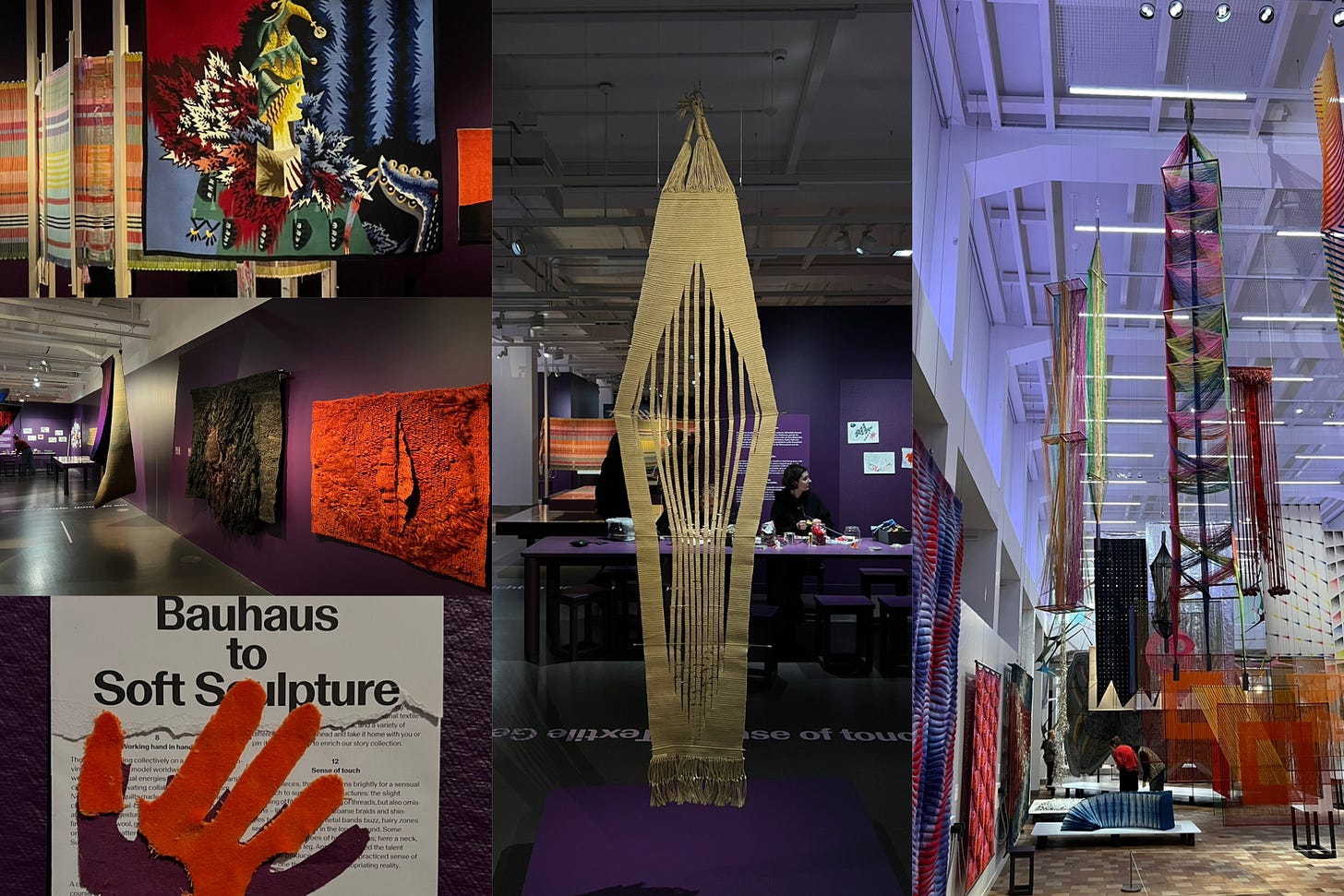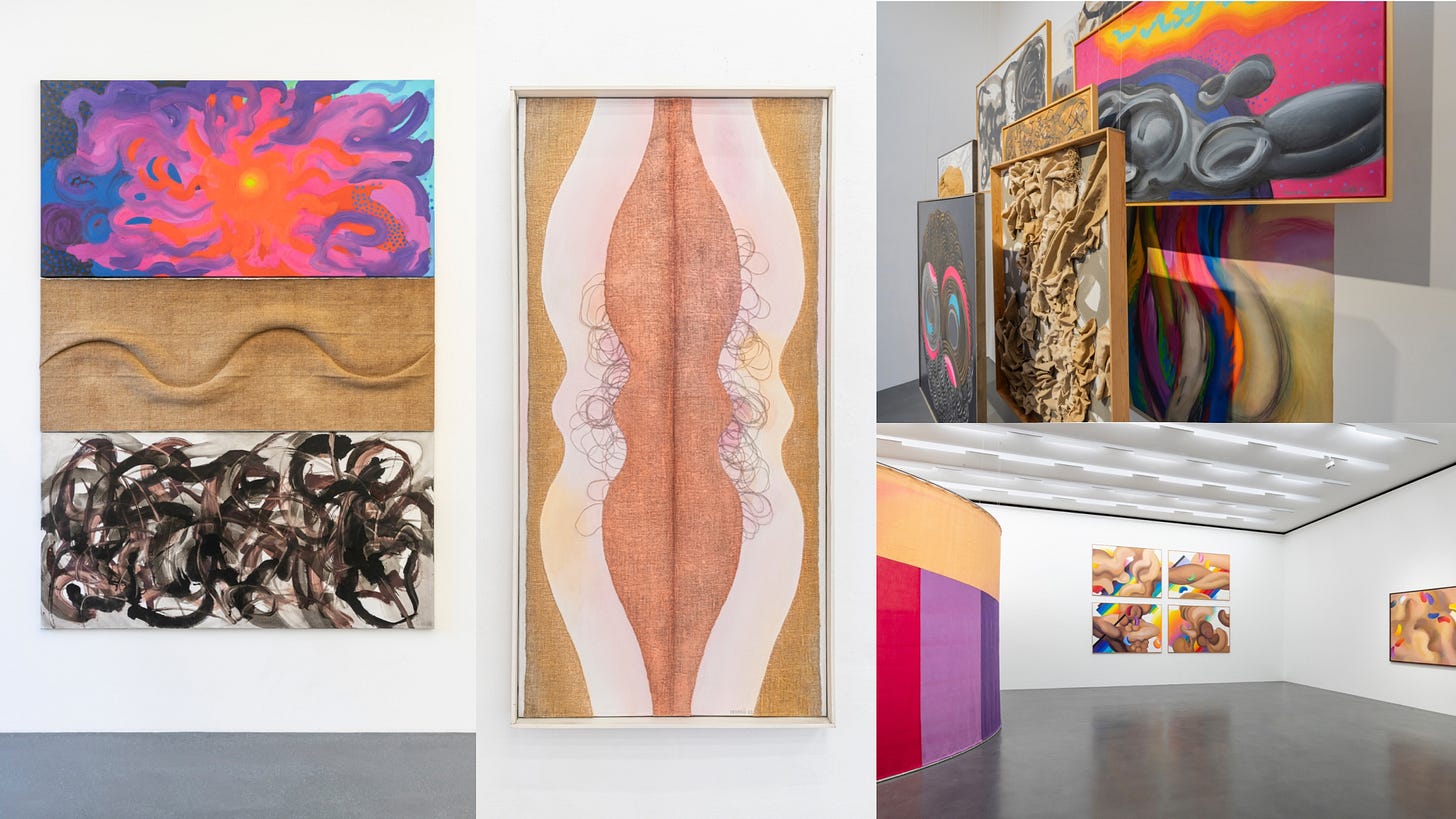3 Must-See Exhibitions in Switzerland this Season
A curated guide to Lausanne, Zurich, and Susch (2025)
Switzerland might be best known for its ski slopes, but if you’re looking for cultural activities on your days off from the mountains, the local art scene has plenty to offer. I, for one, have never skied in my life. Yet my doctoral research often brings me to Switzerland, making its exhibition landscape an accidental but welcome discovery. This season, three exhibitions stand out for me, each offering a unique perspective on textile arts, abstraction, and the role of collecting in shaping art history.
1. Alice Pauli. Galeriste, collectionneuse et mécène
Musée Cantonal des Beaux-Arts, Lausanne | February 14 – May 4, 2025
Alice Pauli was more than a gallerist; she was a visionary patron whose impact on contemporary art, particularly in fiber arts, remains immeasurable. This exhibition celebrates her legacy as a a visionary gallerist, patron, and collector, presenting works from the 454-piece collection she bequeathed to the museum upon her passing in 2022 at the age of 100. It offers a beautifully curated look at the artists she championed, from the grand textile sculptures of Magdalena Abakanowicz and Jagoda Buić to the minimal mastery of Pierre Soulages, not merely offering a retrospective of her life’s work but effectively contextualizing her influence on the artists she supported and movements she helped propel forward.
I had the chance to attend the exhibition’s opening on February 13, on the invitation of the Fondation Toms Pauli in Lausanne. For me, this show held particular significance. Alice Pauli is a figure I have encountered repeatedly in my research, yet I have often felt that her impact had long been underappreciated. The exhibition, displayed over two floors, was a much well-deserved tribute to her vision. Also, seeing Jagoda Buić’s 1970 Homage to Pierre Pauli (Flexions) for the first time—a work whose monumental scale and presence can only be fully grasped in real life—was a revelation, as its impact, which I had written so much about, cannot be understood through images alone. Placed opposite Abakan Rouge (1969), the resonance between these two monumental fiber works was deeply personal—I had written my first master’s thesis on these very artists and their pioneering three-dimensional textile pieces. Seeing them here, together, in an exhibition that pays tribute to the very woman who helped shape their recognition, felt like a perfect full-circle moment.
Though my personal research on fiber art undoubtedly shapes my view, I must emphasize that this exhibition is not solely for enthusiasts of this medium. Alice Pauli’s legacy extends far beyond it; she was an unwavering supporter of artists across all mediums. Honorable mentions include Giuseppe Penone—whose monumental piece standing in the entry hall of the museum, around which the opening reception was held, was also gifted by Pauli—alongside Louise Nevelson, Pierre Soulages, Anselm Kiefer, Rebecca Horn, and many more.
2. Textile Manifestos: From Bauhaus to Soft Sculpture
Museum für Gestaltung, Zürich | February 14 – July 13, 2025
Bringing together more than 90 artists and over 150 works, Textile Manifestos sets out to trace the evolution of textile art from its rigorous, geometry-driven Bauhaus origins to its more experimental, sculptural, and conceptual forms. This ambitious exhibition juxtaposes canonical figures like Sheila Hicks with lesser-known and anonymous textile works, all within a single exhibition space.
Yet despite its impressive breadth, I found the curatorial approach somewhat frustrating. Grouping works only by broad, often vague themes—“Swarm Weaving,” “Sense of Touch,” “Social Fabric,” and so on, the show sometimes lacks theoretical and historical depth in its presentation. While this may allow casual visitors to engage with the material intuitively, it does little to illuminate the conceptual rigor or cultural contexts of the works on display. One particular issue was the reductive treatment of ancient Peruvian textiles and African textiles from the Democratic Republic of Congo, placed together in a single corner of the room under the theme “Working Hand in Hand,” with an explanation that these works were grouped because “such pieces are usually handed down anonymously”—as if European textiles such as embroidered linens, macramé, and crocheted pieces were not also often made by unnamed artisans. In fact, I do have such pieces that were “anonymously” passed down to me by my grandmother. Beyond this, the exhibition space itself felt cramped. Everything was housed within a single room, divided into three sections but ultimately still too crowded to fully appreciate some of the more monumental pieces. Major historical pieces, such as Elsi Giauque’s Colonne en couleurs qui chantent (1964), were given little more prominence than student works from Zurich University of the Arts.
That said, the exhibition remains a must-see, if only for the extraordinary quality of the individual pieces, some of which are rarely shown. And despite my critiques, I did engage with one interactive element: a textile collage station for visitors. My very amateur A4 fabric composition now hangs—at least temporarily—on the same wall as Magdalena Abakanowicz’s works. Whether that enhances or detracts from the exhibition experience is debatable, but it certainly makes for a good story.
3. Ilona Keserü: Flow
Muzeum Susch, Susch | On view until October 26, 2025
The Hungarian artist Ilona Keserü is often described as one of the foremost abstract painters of her generation, having refined a visual language that oscillates between structured geometry and organic fluidity. Over a career spanning more than seven decades, she has moved fluidly between painting, textile reliefs, and architectural interventions, developing a singular visual language rooted in both modernist abstraction and folk traditions. This retrospective at Muzeum Susch offers the most comprehensive international presentation of Keserü’s oeuvre to date, tracing the evolution of her motifs and themes through an immersive installation.
While I have not yet had the chance to see this exhibition in person, it comes highly recommended by Professor Agata Jakubowska, who contributed to its research and monograph. Given the depth and variety of Keserü’s practice—vibrant, tactile works engaging with notions of femininity, materiality, and spatial transformation—I suspect it will be well worth the journey. What I’m most excited about is her fascination with color, particularly the concept of an “endless flow” of hues, definitely one of those things you can only fully grasp in person. And with its extended run until October, there is still plenty of time to experience it firsthand.
En guise de conclusion: for those who, like me, have never mastered (or even tried) the art of skiing, it’s reassuring to know that there are always equally rewarding ways to spend the season. ∎






